What Is Brown Noise and How Does It Help You Sleep?
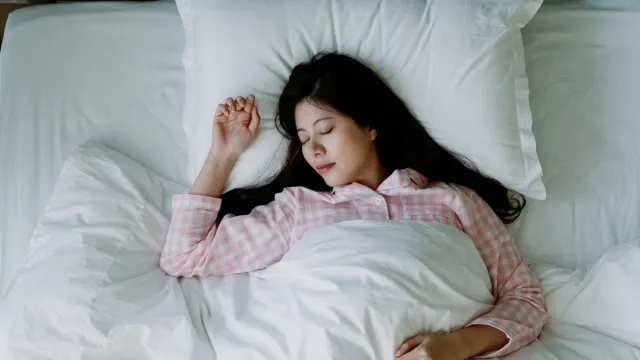
Good sleep can be hard to come by, and it’s especially difficult to wind down after a super-stimulating day. Some people rely on a glass of warm milk or counting sheep, but what do you do when all your bedtime tricks no longer work? Listening to brown noise could be your ticket to dreamland.
We can all agree that getting a good night’s rest is crucial, so we consulted experts who shared their insight on brown noise and its benefits. Keep reading to learn whether it’s worth adding to your nighttime routine.
RELATED: 10 Genius Tricks for Falling Back Asleep in the Middle of the Night.
What Is Brown Noise?
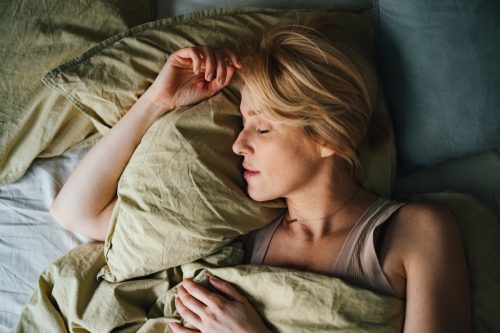
Brown noise is also known as red noise, but don’t let the different names throw you. Each color describes the frequency of the noise and how its sound waves are structured. Brown noise has sound waves that randomly shift in volume and speed. Because of this, our brains perceive the sound as calming, which elicits a soothing feeling.
According to Korina Burkhard, a sleep expert at Dozy, brown noise “is a sound with a low frequency that focuses on rumbles and bass. It sounds like white noise without the treble, giving it a calm rumbling sound.”
Interestingly enough, this ambient noise isn’t really named after the color brown. It was instead named after Scottish botanist Robert Brown, who discovered the Brownian motion pattern, which he used to describe how pollen grains moved in water. Brown noise sound waves, like pollen grains, dance in a similar chaotic fashion.
What Are Examples of Brown Noise?
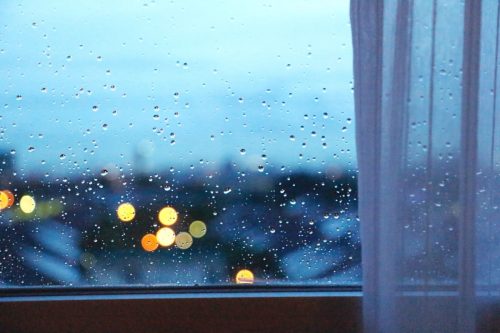
Brown noise is often described as a natural sound that mimics a deep rumbling. Even if you’ve never heard of brown noise, you’ve surely experienced it through familiar sounds like:
- The hum of an air-conditioning or large fan
- Rustling leaves
- A running shower
- Crashing waves
- The rumble of thunder
- The roar of a waterfall
- A heavy downpour
- A running washing machine
- A vacuum cleaner
How Does Brown Noise Help You Sleep?
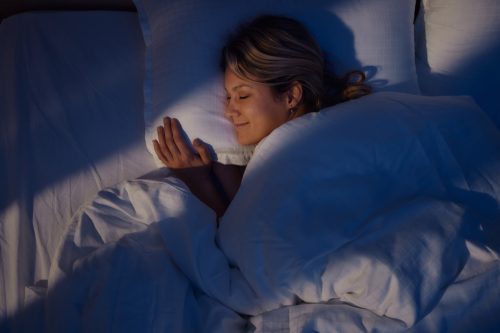
Many people use ambient noises to help them fall asleep, and brown noise is sometimes one of them. Due to its soothing sound qualities, it tends to make listeners feel comfortable and settled.
“The even and calming qualities of brown noise are soothing to the nervous system,” explains Kubanych Takyrbashev, a health and wellness expert. “When we hear such a sound, our brain perceives it as non-threatening and soothing, which helps reduce stress and anxiety levels. This, in turn, creates a peaceful environment that is conducive to falling asleep. The sound of brown noise envelops us like a sonic cocoon, providing a sense of tranquility and calmness.”
Brown noise has a continuous sound, which helps establish a stable sleep environment throughout the night. Takyrbashev says that the consistency within the sound “reduces the chances of waking up due to abrupt changes in noise levels, ensuring a more undisturbed sleep. The steady hum of brown noise can help us sleep better by blocking out unexpected sounds.”
RELATED: Feng Shui Bedroom Tips for Better Sleep.
What Does Brown Noise Do to Your Brain?

Brown noise has a very specific impact on our ears and on our brains, which can affect the way we feel.
“Brown noise has been shown to promote alpha brainwave activity, which is associated with a state of calmness and relaxation,” says Gemma Coe, an award-winning sleep specialist.
The cochlear fibers in our inner ears are very sensitive to different sound frequencies, which is why they’re able to hear all detectable low frequencies at once when listening to brown noise. This creates a deeply engaging and immersive experience for your brain.
RELATED: 5 Things You Should Never Have in Your Bedroom If You’re a Light Sleeper.
What Devices Can Create Brown Noise?
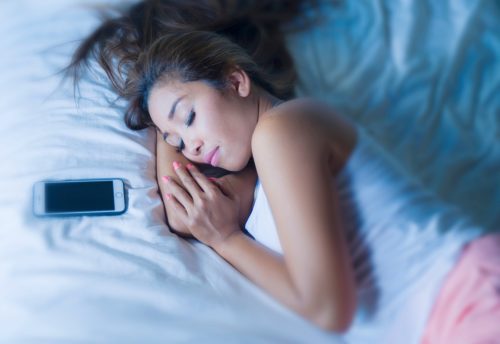
Interested in adding some brown noise to your life? Look no further than your phone or laptop. In addition to YouTube, there are plenty of sites filled with brown noise videos or audio you can access for free.
But if you’re looking for something more official, download an app specifically for ambient and brown noise. These programs are usually free, but could come with added costs if you want customizable features.
There are also devices designed specifically for your auditory pleasure. Look into high-quality sound machines, which can cost between $20 and $130, depending on the features and grade you’re looking for.
What Are the Potential Risks of Listening to Brown Noise?

Brown noise, like any sound, should be listened to at a moderate volume to avoid damaging your hearing. Studies suggest nothing above 70 dB, and if you have any auditory concerns, you may want to check in with your doctor first.
“People with hearing impairments or sensitivities to low-frequency sounds might want to be extra cautious,” says Jennie Lannette Bedsworth, a licensed clinical social worker and behavioral therapist. “And, of course, it’s not a miracle cure. If you have serious sleep issues or trouble concentrating, it’s best to consult with a doctor or mental health professional.”
As with most things, be sure to use brown noise in moderation. Burkhard suggests switching up the sounds you listen to, as overuse can reduce the effectiveness and impact of brown noise. Coe also warns us to avoid becoming too “reliant on the noise to fall asleep, so if you find yourself without it, you may struggle to fall asleep.”
RELATED: 6 Reasons You Feel Tired But Can’t Fall Asleep, According to Doctors.
What’s the Difference Between Brown Noise and White Noise?
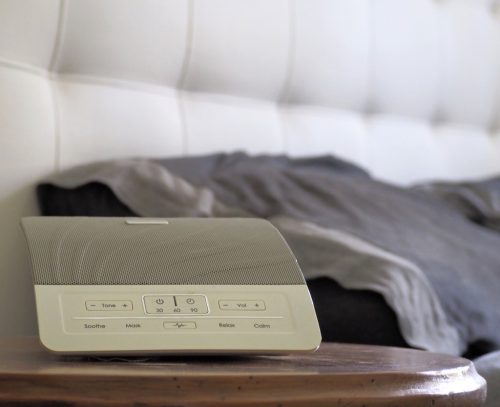
You’re probably asking yourself, how can a color describe a sound? Color is used to represent a noise classification, which describes the frequency of the sound, how much surrounding sound the noise can drown out, the shape of its sound waves, and how people respond to it.
That’s all well and good, but how does brown noise compare with white noise, which is something we hear about more often?
“Essentially, [brown noise] is a type of sound that has a lower frequency than white noise,” Bedsworth says. “If you imagine white noise as a gentle hiss, brown noise is more like a soft rumble.”
Although brown and white noise are both used to help people fall asleep or focus, white noise may feel more intense than brown noise. It also has higher pitches, which can sound a lot like a fan or TV static. It’s often likened to pink noise, which sounds like a duller version of white noise. Its lower frequencies are more pronounced and can be compared to the sound of light rain on a tin roof.
Brown noise has louder lower frequencies than high, while white noise is spread across all frequencies from high to low.
Can Brown Noise Help You Focus?

Have you ever wanted to quiet your mind in a loud space? Brown noise could be just what you need to tune out the world and focus on your thoughts.
“Brown noise can help enhance concentration by reducing the impact of sudden and jarring sounds,” Takyrbashev says. “When we are trying to focus or relax, unexpected noises can disrupt our mental state. Brown noise has equal intensity across all frequencies. This stability allows our mind to stay more focused and less prone to distractions.”
There are still studies being developed as to whether brown noise can help people with attention deficit disorders, but there is research that supports the relationship between ADHD symptoms and sound.
“By masking distracting background sounds, it allows you to zero in on the task at hand,” Bedsworth says. “Some folks with ADHD have found it especially helpful for staying on track. [Brown noise] can help quiet a racing mind, reduce stress and anxiety.”
RELATED: 5 Calming Drinks That Will Help You Get a Better Night’s Sleep.
What Are the Other Benefits of Brown Noise?

Brown noise isn’t just a great tool for falling asleep or getting work done in a noisy area.
“Some people find it eases things like tinnitus (ringing in the ears) and even helps calm symptoms of PTSD,” Bedsworth says.
Check out these other upsides of brown noise and how you can incorporate them into your daily life.
1. It’s accessible
Brown noise is a cool ambient sound for many reasons, but best of all, it’s a free tool. You can pull it up on your phone or engage with natural brown noises. So, take advantage of the next rainy day, or journey to your closest waterfall or laundromat. It’s that easy.
2. It’s great for meditation practices.
The next time you do yoga or meditate, replace your instrumental music with brown noise. Because it helps you focus, it can be a great way to reduce intrusive thoughts and distractions for a more refreshing meditative session.
3. It boosts productivity.
According to a National Center of Biotech 2020 study, listening to different colors of noise can help you be more productive, which can lead to effective work conditions. This can be especially helpful for remote workers looking to create a more efficient at-home space.
Wrapping Up
Brown noise is a great way to quiet your mind and relax. So the next time your thoughts are racing, or you’re up tossing and turning in bed, listen to this low-frequency sound and see if it works for you.